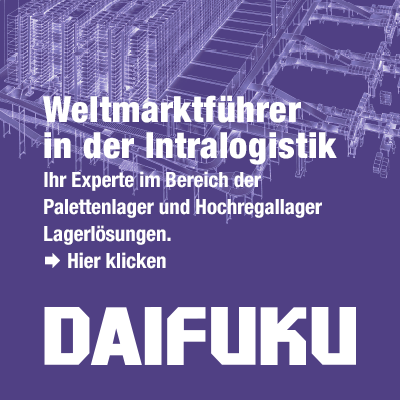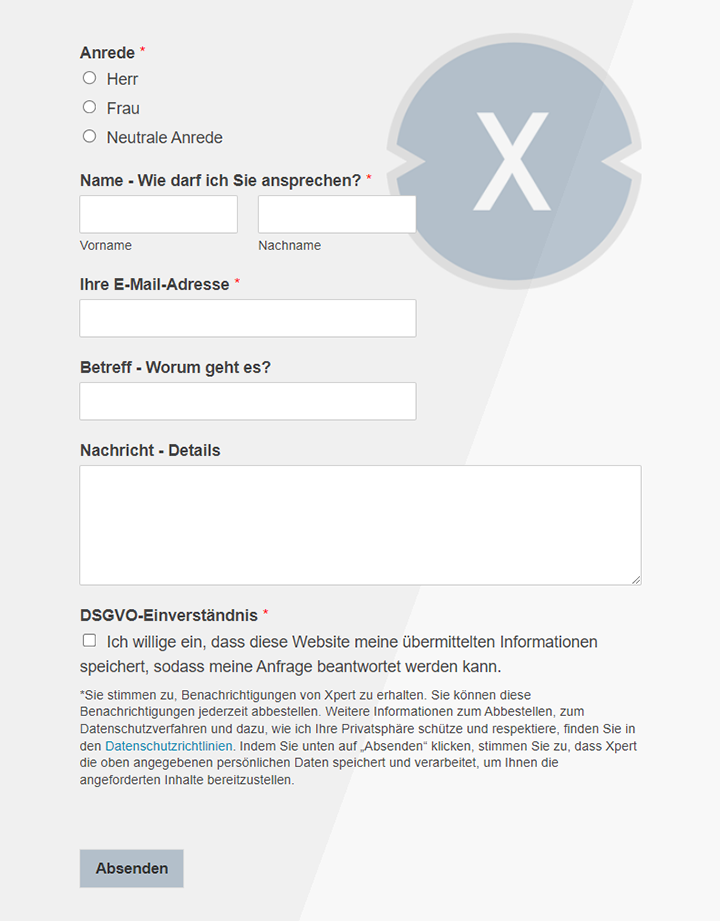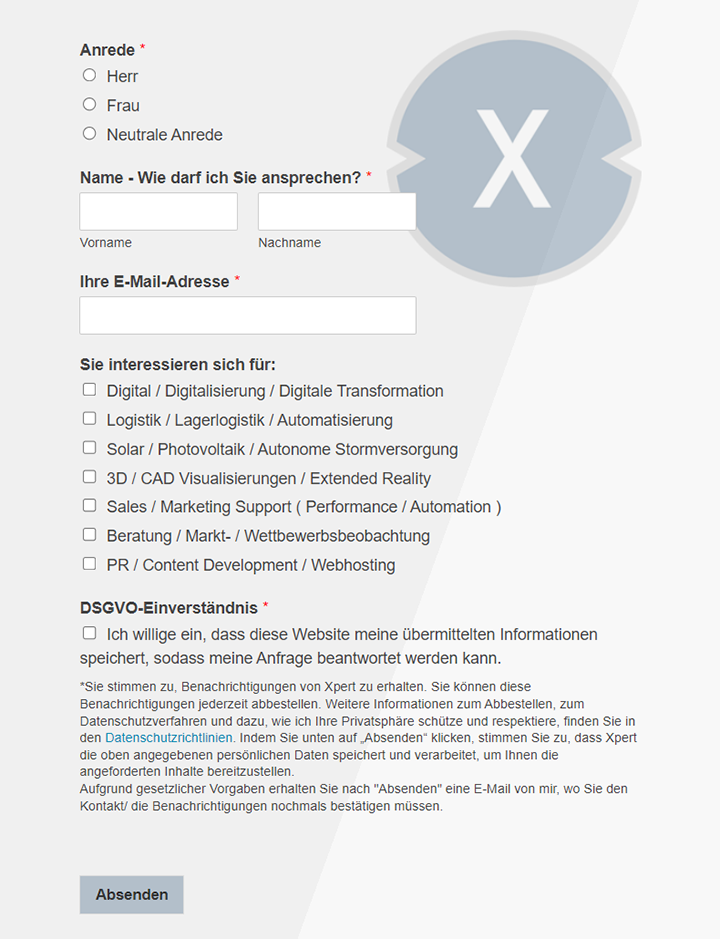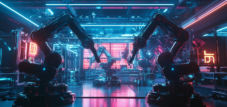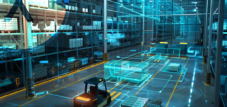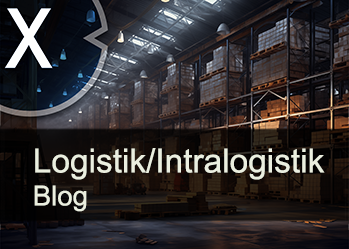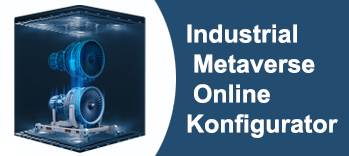Automation and robotics in intralogistics: trends, challenges and opportunities
Xpert pre-release
Language selection 📢
Published on: April 8, 2025 / update from: April 8, 2025 - Author: Konrad Wolfenstein

Automation and robotics in intralogistics: trends, challenges and opportunities - creative image: xpert.digital
Growth potential in intralogistics despite economic challenges
Robotics meet intralogistics: pioneers for economic progress
The intralogistics industry is currently going through a profound transformation, characterized by increasing automation and the use of innovative robotics and AI solutions. Despite a weakening German economy, there are significant growth potential and technological advances in this area. While some companies such as 'Schwingshandl Automation Technology' record above -average growth, many established companies are fighting with the integration of new technologies into existing structures. The following explanations examine the current developments, challenges and opportunities for automation and robotics in intralogistics as well as their importance for the future viability of companies in this sector.
Suitable for:
- What is the reason for the current success of some companies in mechanical engineering despite the economic crisis in Germany?
Current developments and innovations in intralogistics
The intralogistics industry is currently experiencing a remarkable boost of innovation, which is driven by leading providers such as Viastore, Agilox and Kurz. These companies focus on intelligent automation solutions that focus on efficiency, flexibility and scalability. Veastore recently expanded its range of solutions in the pallet storage with innovative palette shuttles that enable companies to maximize their storage capacities - even with irregular storage ground cracks. With a payload of up to 1,500 kilograms and an operating temperature range from -30 to +50 degrees Celsius, these fully automatic systems offer a variety of possible uses, even in frozen applications. Due to their compact design, the shuttles need less space for roads, which means that more loading units can be accommodated and the storage space is optimally used.
In the area of autonomous mobile robots (AMR), Agilox positions itself as a leading provider with an impressive presence on the global market. With over 1,800 autonomous mobile robots in the field and well -known customers such as Siemens, BMW, Bosch and Daimler, the company has established itself internationally. In order to promote further global growth, Agilox introduced a new CEO double tip with David Niedermaier and Dirk Erlacher on April 1, 2025. This strategic decision underlines the company's expansion, which already has branches in Europe, the USA and China and employs more than 250 people. The international experience of Dirk Erlacher, who previously headed the expansion into the Asian market as CEO of Agilox APAC, is intended to further strengthen the global strategy and operational efficiency.
The AI-based robotic is also becoming increasingly important, as the cooperation between Knapp and Covariant shows. The focus of this cooperation focuses on the robot ordering solution Pick-IT-Easy Robot, which was developed around five years ago with Covarian's AI-based vision system. This innovative solution enables the automatic handling of individual pieces, for example for high -performance communication or fully automatic handover of goods to pocket site systems. Thanks to the AI application, more articles with different sizes, surface properties or packaging can be processed with robotics in logistics applications. Technology has proven itself in both new warehouse structures and for optimizing existing locations and is now used by 26 scarce customers in different industries worldwide.
Technological advances change the intralogistics landscape
The intralogistics is in a phase of profound transformation, driven by innovative technologies such as autonomous mobile robots, digital twins, artificial intelligence and humanoid robots. This technological advances mark a new era in which flexibility and innovative ability to successfully become decisive success factors. Automation is the key to increasing efficiency in intralogistics, with autonomous mobile robots (AMRS) and automated guided vehicles (AGVS) revolutionize material flows and offer companies the opportunity to manage complex logistics requirements more efficiently.
The variety of robots in intralogistics is expanding rapidly, with leading providers such as magazine and kuka, which develop versatile robot systems from mobile small division to collaborative mobile robots. New robot types such as autonomous forklifts for the outdoor area or robot tractors for the farm continuously expand the possible uses. Specialized systems such as cleaning robots and drones are also becoming increasingly important by seamlessly integrating into production processes and monitoring stocks in real time. Humanoid robots of companies such as Figure AI and Agility Robotics could take on flexible tasks such as submissions in the future and thus further expand the spectrum of automated processes.
Suitable for:
- Staying competitive: The key role of innovation in Germany’s industry – collaboration across sectors is crucial
Market development and economic framework conditions
The economic framework for the intralogistics industry is currently presenting themselves as challenging, but also show signs of resilience and growth potential. The current forecasts of the “logistics methods” indicate that the economic area of logistics in 2025 will have a real shrink by 0.1 percent, while nominal is expected to grow by 1.3 percent. However, the 26 experts from the expert group, which come from different companies such as Audi, DB Cargo, KPMG and Otto Group, may see the downward trend at a turning point, even if the overall situation is still considered challenging. This development is in contrast to the expected GDP growth and underlines the specific challenges with which the logistics industry is confronted.
Despite these difficult framework conditions, the intralogistics market shows remarkable resistance and growth potential. While the industry was estimated at $ 41.3 billion in 2022, experts expect annual growth of 8 to 10 percent by 2032. In this challenging environment there are companies that are above average through specialization and innovative strength. An example of this is Schwingshandl Automation Technology GmbH, a leading provider of tailor -made intralogistics solutions, which has more than doubled its turnover in the past four years and for the first time generated over 45 million euros in 2024. For 2025, the company expects sales of around 50 million euros and demonstrates that growth is possible even in difficult times.
Schwingshandl Automation Technology GmbH acts in a specialized niche that is often too small and too complex for highly standardized general contractors, and delivers tailor-made solutions for a wide variety of industries- from food production to fashion and airport logistics to the automotive industry. This focus on niche markets and the ability to meet individual customer needs proves to be a successful strategy in a competitive environment. The company has already prepared expansion plans for the planned further growth, which underlines trust in the future market development.
Challenges when implementing automation solutions
The implementation of automation solutions in intralogistics is associated with numerous challenges, which many companies present with considerable hurdles. A current study by TMG Consultants entitled “Automation and Digitization in intralogistics” reveals considerable catching up to do in this area and comes to the conclusion: “Production Good, intralogistics poor”. The fact that 63 percent of the companies surveyed did not have or only to be automated, or only to a bit, have been automated, while another 22 percent have partially automated processes. Highly automated processes with integrated systems can only be found in 11 percent of companies, and only 4 percent achieve the highest level of autonomous intralogistics. These figures illustrate the significant discrepancy between the technological potential and the actual implementation in practice.
An important problem in automation of intralogistics is inadequate planning and analysis of the current processes before the introduction of automated systems. Many companies overestimate the maturity of their intralogistics and neglect a comprehensive analysis of the processes, which leads to suboptimal integrations and inefficient systems. Other frequent errors include the lack of flexibility of the automated systems, which cannot adapt sufficiently to changing circumstances or production conditions, as well as a lack of standardization of intralogistics processes that make automation difficult. These factors, coupled with inadequate training and how they can be used for employees, often lead to suboptimal use of the implemented technologies.
The integration of new technologies into existing operating processes is another central challenge. In particular, the automated truck discharge on the ramp has so far remained an unsolved challenge, as the TMG study shows. The technological integration of different systems requires a high degree of expertise and careful planning, which overwhelms many companies. There is often a lack of a strategic overall, adequate project touring tours and a well -founded market overview, which leads to a certain resignation and endanger competitiveness through outdated intralogistics structures. These outdated structures not only lead to inefficient processes, but also to frustration among employees and can weaken the company's market position in the long term.
Xpert partner in warehouse planning and construction
A shortage of skilled workers and automation: How intralogistics reacts to the challenges
The human factor in automated intralogistics
The shortage of skilled workers represents one of the greatest challenges for intralogistics, as a EHI study on the subject of “success factors of modern trade logistics” shows in which nine of 13 surveyed companies call the personnel search as a central challenge. The logistics industry employs around 2.8 million people in Germany and acts as a service provider in an environment that is characterized by increasing dynamics, complexity and unplannability. New hires of qualified employees are becoming increasingly difficult in the logistics industry under the conditions of the low -wage sector, while the sickness and the fluctuation rate of young employees are comparatively high.
The required flexibility is currently mostly managed by the use of temporary workers, but personnel measures are increasingly sufficient to compensate for short -term and unplanned performance fluctuations. The competition for a limited offer of workers increasingly limits this solution and increases the pressure on companies to find alternative solutions. Automation offers opportunities here, but also requires a corresponding qualification of the existing employees in order to be able to use the new technologies effectively. Finding the balance between technological innovation and human expertise remains one of the central challenges for the successful transformation of intralogistics.
Opportunities and potential of automation
Despite all the challenges, automation in intralogistics opens up considerable opportunities and potential for companies. Through the use of innovative technologies, considerable efficiency increases and process optimizations can be implemented, which can offer decisive advantages in today's competitive economic landscape. Automated systems such as the pallet shuttle system from Viastore enable an extremely compact and multiple-deep storage, which leads to optimal use of the available storage space. The shuttles are so compactly constructed that less space is needed for roads, which means that more loading units can be accommodated and the capacity of the warehouse is maximized. This optimization of warehousing contributes significantly to increasing the overall efficiency and at the same time reduces operating costs through better use of resources.
Another significant advantage of modern automation solutions lies in their flexibility and scalability. The Viastore pallet shuttle system, for example, is characterized by its modular design, which enables flexible adaptation to existing building structures. With its brownfield-capable architecture, the system can also be implemented in existing warehouses and tailored to existing spatial, floor or roof plans. Different layouts per level can be realized, and the shuttles can independently change the direction, which makes them particularly suitable for buildings with irregular floor plans. Additional shuttles can be easily integrated to increase throughput, while the shelf system can be flexibly enlarged by further places, which enables simple scaling according to the growing requirements of the company.
Automation also offers significant competitive advantages that can be of crucial importance in today's dynamic market environment. An EHI study shows that eleven out of 13 traders surveyed in the future are planning concrete steps towards automation, while six want to use robotics applications. Technological progress should not only enable companies to increase their competitiveness, but also to react to the increasing demand for quick and reliable deliveries. Especially in the area of picking, great potentials are seen, where solutions such as the pick-it -easy robot are already used by a little successfully to relieve employees of monotonous routine-pick activities and at the same time increase the precision and speed.
Suitable for:
- Digital economy as a beacon of hope: Growth despite economic downturn - Germany's digital market ranks 4th in a global comparison
Sustainability and improved working conditions through automation
In addition to the economic advantages, automation also offers considerable opportunities in the area of sustainability and workplace design. Modern automated systems such as the pallet shuttle system from Viastore are characterized by lower energy consumption compared to other automation solutions, which brings with both ecological and economic advantages. The more efficient use of energy contributes to reducing ecological footprint and supports companies in achieving their sustainability goals, which are becoming increasingly important today. At the same time, these systems offer maximum security and reliability through redundant shuttle inserts as well as simple maintenance options during operation, which minimizes downtime and ensures operating continuity.
Automation also leads to a significant improvement in working conditions for instrumental in intralogistics. By taking over monotonous, repetitative and physically stressful activities through robots and automated systems, employees can concentrate on more demanding and more value -added tasks. This not only leads to greater job satisfaction, but also to a reduction in work -related health problems and downtimes. Robot solutions such as the Pick-IT-Easy Robot of Knapp relieve the employees in the warehouse of monotonous routine-pick jobs and thus contribute to a more humane work design. This improvement in working conditions can also help to counteract the shortage of skilled workers by increasing the attractiveness of the jobs in the logistics industry.
Future prospects and recommendations for action
The future of intralogistics will be significantly shaped by the further expansion of automation and the integration of intelligent technologies. The intralogistics is in a phase of profound transformation in which innovative technologies such as autonomous mobile robots, digital twins, artificial intelligence and humanoid robots advance development. Cloud-based platforms improve efficiency, security and scalability while helping companies use resources such as energy more efficient. These trends mark a new era in which flexibility and innovative ability are crucial success factors and companies that close this development run the risk of losing connection.
However, the implementation of automation solutions requires careful planning and strategic approach to avoid costly mistakes. A common error is that companies introduce automation without adequate planning and analysis of their current processes or the specific requirements. It is therefore crucial to carry out a comprehensive analysis of the processes in order to optimally integrate the automated systems into the overall system. It is equally important to ensure sufficient flexibility of the implemented solutions in order to be able to react to future challenges and changed market conditions. A automation that is too rigid can lead to bottlenecks and inefficient processes and cause more problems than solve in the long term.
For companies that want to modernize their intralogistics, Brownfield-capable solutions are of particular importance, since they enable integration into existing structures without making any costly complete buildings necessary. Systems such as the pallet shuttle system from Viastore can be implemented in existing warehouses with their brownfield-capable architecture and tailored to existing spatial, floor or roof plans. This enables a gradual modernization and automation of intralogistics, which is better adapted to the financial and operational possibilities of many companies. The robot order solution solution Pick-IT-Easy Robot von Knapp has also proven itself in Greenfield applications and in Brownfield environments to optimize existing locations and thus offers flexible possible uses for different starting situations.
The successful implementation of automation solutions in intralogistics also depends on the correct integration and qualification of employees. Inadequate training courses and the personnel phases for the staff can lead to the new technologies not used effectively and their potential is not fully exploited. It is therefore essential to provide sufficient resources for training and continuous further training for employees and to actively integrate them into the transformation process. Only through the combination of technological innovation and human expertise can companies open up the full performance of modern intralogistics solutions and optimally position themselves for the challenges of the future.
Suitable for:
- Which industries are currently booming? Photovoltaics, logistics, AI, 5G, drones, vaccines, capital and virtual worlds with the metaverse
Why the intralogistics market continues to grow despite declines
Automation and robotics in intralogistics offer enormous potential for increases in efficiency, cost savings and competitive advantages, but also present companies with considerable challenges in implementing and integration into existing structures. The development of innovative solutions such as autonomous mobile robots, AI-supported picking systems and flexible pallet shuttle systems is progressing quickly and opens up new opportunities for the optimization of logistical processes. At the same time, the reality in many companies still shows considerable need to catch up, as the fact that 63 percent of the companies surveyed did not automate their intralogistics, or have only to be automated.
The economic framework is currently presenting themselves as challenging, with a forecast real shrinkage of the logistics sector by 0.1 percent in 2025. However, there are also success examples such as Schwingshandl Automation Technology in this difficult environment, which achieve above -average growth through specialization and innovative strength. Despite the current economic challenges, the intralogistics market shows considerable growth potential with an expected annual increase of 8 to 10 percent to 2032. This positive development is significantly driven by the increasing automation and use of innovative technologies.
For a successful transformation of intralogistics, a strategic, holistic approach is required that takes into account technological innovation, process optimization and employee qualifications alike. Companies that master this challenge will be able to strengthen their competitiveness, to react to rising customer requirements and at the same time create more sustainable and more human working conditions. The future of intralogistics lies in intelligent, networked and flexible systems that integrate seamlessly into the overall structure of the company and create measurable added value. In this dynamic environment, those companies will be successful who are willing to invest in innovation, learn from mistakes and to continuously develop their processes.
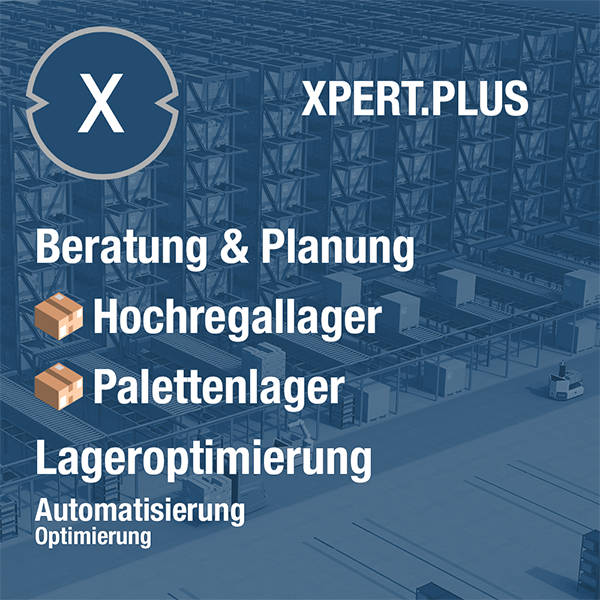
Xpert.Plus warehouse optimization - high-bay warehouses such as pallet warehouses consulting and planning
We are there for you - advice - planning - implementation - project management
☑️ Smart City & Factory: Industry expert for energetic 5G buildings and halls as well as advice and installation of solar systems
☑️ Xpert.Plus - logistics consulting and logistics optimization
☑️ Industry expert, here with his own Xpert.Digital Industry Hub with over 2,500 specialist articles
I would be happy to serve as your personal advisor.
You can contact me by filling out the contact form below or simply call me on +49 89 89 674 804 (Munich) .
I'm looking forward to our joint project.
Xpert.Digital - Konrad Wolfenstein
Xpert.Digital is a hub for industry with a focus on digitalization, mechanical engineering, logistics/intralogistics and photovoltaics.
With our 360° business development solution, we support well-known companies from new business to after sales.
Market intelligence, smarketing, marketing automation, content development, PR, mail campaigns, personalized social media and lead nurturing are part of our digital tools.
You can find out more at: www.xpert.digital - www.xpert.solar - www.xpert.plus





